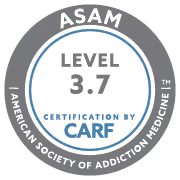Table of Contents
Alcohol Contains More Calories Than You Think
Alcohol is calorie-dense. Each gram of pure alcohol contains 7 calories—almost as much as fat, which has 9 calories per gram. On top of that, many alcoholic beverages include sugars, syrups, and mixers that add even more calories. For individuals watching their weight or following a health-focused lifestyle, selecting lower-calorie alcohol options can make a meaningful difference without giving up social enjoyment.

Why Calorie Content in Alcohol Matters
Unlike nutrients such as protein or fiber, alcohol calories provide no satiety or nutritional benefit. They’re often called “empty calories” because they contribute to energy intake without delivering vitamins, minerals, or sustained fullness. Consuming alcohol regularly, even in modest amounts, can lead to gradual weight gain—especially when paired with reduced inhibitions and late-night eating.
Top Low-Calorie Alcohol Options
Some types of alcohol are naturally lower in calories, particularly when served without sugary mixers. Here are several smart choices for calorie-conscious drinkers:
- Vodka (1.5 oz shot): ~96 calories
- Gin (1.5 oz shot): ~97 calories
- Tequila (1.5 oz shot): ~98 calories
- Dry wine (5 oz glass):
- White (e.g., Sauvignon Blanc): ~120 calories
- Red (e.g., Pinot Noir): ~125 calories
- Light beer (12 oz): ~100 calories
- Champagne or Prosecco (5 oz): ~90–100 calories
- Hard seltzers (12 oz can): ~90–100 calories, depending on brand
Cocktails made with soda water, fresh citrus, and herbs instead of sugary mixers are also better choices for keeping calories in check.
 ### **Why Calorie Content in Alcohol Matters** Unlike nutrients such as protein or fiber, alcohol calories provide no satiety or nutritional benefit. They’re often called “empty calories” because they contribute to energy intake without delivering vitamins, minerals, or sustained fullness. Consuming alcohol regularly, even in modest amounts, can lead to gradual weight gain—especially when paired with reduced inhibitions and late-night eating. ### **Top Low-Calorie Alcohol Options** Some types of alcohol are naturally lower in calories, particularly when served without sugary mixers. Here are several smart choices for calorie-conscious drinkers: - **Vodka (1.5 oz shot):** ~96 calories - **Gin (1.5 oz shot):** ~97 calories - **Tequila (1.5 oz shot):** ~98 calories - **Dry wine (5 oz glass):** - White (e.g., Sauvignon Blanc): ~120 calories - Red (e.g., Pinot Noir): ~125 calories - **Light beer (12 oz):** ~100 calories - **Champagne or Prosecco (5 oz):** ~90–100 calories - **Hard seltzers (12 oz can):** ~90–100 calories, depending on brand Cocktails made with soda water, fresh citrus, and herbs instead of sugary mixers are also better choices for keeping calories in check.  ### **Drinks to Avoid If You’re Cutting Calories** Some drinks may look light but are surprisingly calorie-heavy due to added sugar, cream, or syrup. High-calorie culprits include: - Margaritas (up to 300+ calories) - Pina coladas (400+ calories) - Craft beers (200–300 calories per 12 oz) - Sweet dessert wines (160–200 calories per 5 oz) - Pre-mixed cocktails with syrups or juice concentrates Even small changes—like swapping tonic water for soda water—can reduce calories by 50 or more per drink.  ### **Tips for Drinking Smarter** If you want to enjoy alcohol without sabotaging your health goals, consider these strategies: - Alternate alcoholic drinks with water - Stick to clear spirits with no mixers or use calorie-free options like soda water and lemon - Choose smaller glass sizes - Avoid drinking on an empty stomach to prevent overconsumption - Set a drink limit before going out These habits help reduce not only calorie intake but also the likelihood of drinking-related regrets or next-day fatigue. ### **Does Drinking Light Alcohol Prevent Weight Gain?** Light or low-calorie alcohol can reduce calorie intake compared to heavier drinks, but moderation remains key. A few “light” drinks can still add up. For example, three light beers equal around 300 calories—similar to a fast-food sandwich. When consumed frequently, even low-calorie alcohol contributes to weight gain, especially if paired with high-fat or high-carb foods. Long-term, people aiming to lose or maintain weight often benefit from reducing alcohol frequency or choosing alcohol-free alternatives entirely. The growing availability of non-alcoholic spirits, wines, and beers has made this more accessible than ever. If you’re considering cutting back for health or recovery reasons, the [Addiction Guidance resources at Hollywood Hills Recovery](https://www.hollywoodhillsrecovery.com/addiction-guidance) provide expert strategies and personalized support. ### **Final Thoughts** Choosing low-calorie alcoholic drinks can help you stay aligned with your health goals while still enjoying social events. While no alcoholic beverage is truly “healthy,” some are better than others in terms of caloric impact. With the right choices and smart habits, it’s possible to drink in moderation without compromising wellness.](https://cdn.prod.website-files.com/605673c187496c732ae91856/6911e0db880d83a586a6c012_2_Lowest%20Calorie%20Alcohol%20Choices%20for%20Health-Conscious%20Drinkers.jpg)
Drinks to Avoid If You’re Cutting Calories
Some drinks may look light but are surprisingly calorie-heavy due to added sugar, cream, or syrup. High-calorie culprits include:
- Margaritas (up to 300+ calories)
- Pina coladas (400+ calories)
- Craft beers (200–300 calories per 12 oz)
- Sweet dessert wines (160–200 calories per 5 oz)
- Pre-mixed cocktails with syrups or juice concentrates
Even small changes—like swapping tonic water for soda water—can reduce calories by 50 or more per drink.
 ### **Why Calorie Content in Alcohol Matters** Unlike nutrients such as protein or fiber, alcohol calories provide no satiety or nutritional benefit. They’re often called “empty calories” because they contribute to energy intake without delivering vitamins, minerals, or sustained fullness. Consuming alcohol regularly, even in modest amounts, can lead to gradual weight gain—especially when paired with reduced inhibitions and late-night eating. ### **Top Low-Calorie Alcohol Options** Some types of alcohol are naturally lower in calories, particularly when served without sugary mixers. Here are several smart choices for calorie-conscious drinkers: - **Vodka (1.5 oz shot):** ~96 calories - **Gin (1.5 oz shot):** ~97 calories - **Tequila (1.5 oz shot):** ~98 calories - **Dry wine (5 oz glass):** - White (e.g., Sauvignon Blanc): ~120 calories - Red (e.g., Pinot Noir): ~125 calories - **Light beer (12 oz):** ~100 calories - **Champagne or Prosecco (5 oz):** ~90–100 calories - **Hard seltzers (12 oz can):** ~90–100 calories, depending on brand Cocktails made with soda water, fresh citrus, and herbs instead of sugary mixers are also better choices for keeping calories in check.  ### **Drinks to Avoid If You’re Cutting Calories** Some drinks may look light but are surprisingly calorie-heavy due to added sugar, cream, or syrup. High-calorie culprits include: - Margaritas (up to 300+ calories) - Pina coladas (400+ calories) - Craft beers (200–300 calories per 12 oz) - Sweet dessert wines (160–200 calories per 5 oz) - Pre-mixed cocktails with syrups or juice concentrates Even small changes—like swapping tonic water for soda water—can reduce calories by 50 or more per drink.  ### **Tips for Drinking Smarter** If you want to enjoy alcohol without sabotaging your health goals, consider these strategies: - Alternate alcoholic drinks with water - Stick to clear spirits with no mixers or use calorie-free options like soda water and lemon - Choose smaller glass sizes - Avoid drinking on an empty stomach to prevent overconsumption - Set a drink limit before going out These habits help reduce not only calorie intake but also the likelihood of drinking-related regrets or next-day fatigue. ### **Does Drinking Light Alcohol Prevent Weight Gain?** Light or low-calorie alcohol can reduce calorie intake compared to heavier drinks, but moderation remains key. A few “light” drinks can still add up. For example, three light beers equal around 300 calories—similar to a fast-food sandwich. When consumed frequently, even low-calorie alcohol contributes to weight gain, especially if paired with high-fat or high-carb foods. Long-term, people aiming to lose or maintain weight often benefit from reducing alcohol frequency or choosing alcohol-free alternatives entirely. The growing availability of non-alcoholic spirits, wines, and beers has made this more accessible than ever. If you’re considering cutting back for health or recovery reasons, the [Addiction Guidance resources at Hollywood Hills Recovery](https://www.hollywoodhillsrecovery.com/addiction-guidance) provide expert strategies and personalized support. ### **Final Thoughts** Choosing low-calorie alcoholic drinks can help you stay aligned with your health goals while still enjoying social events. While no alcoholic beverage is truly “healthy,” some are better than others in terms of caloric impact. With the right choices and smart habits, it’s possible to drink in moderation without compromising wellness.](https://cdn.prod.website-files.com/605673c187496c732ae91856/6911e109e589ce21fc99650a_3_Lowest%20Calorie%20Alcohol%20Choices%20for%20Health-Conscious%20Drinkers.jpg)
Tips for Drinking Smarter
If you want to enjoy alcohol without sabotaging your health goals, consider these strategies:
- Alternate alcoholic drinks with water
- Stick to clear spirits with no mixers or use calorie-free options like soda water and lemon
- Choose smaller glass sizes
- Avoid drinking on an empty stomach to prevent overconsumption
- Set a drink limit before going out
These habits help reduce not only calorie intake but also the likelihood of drinking-related regrets or next-day fatigue.
Does Drinking Light Alcohol Prevent Weight Gain?
Light or low-calorie alcohol can reduce calorie intake compared to heavier drinks, but moderation remains key. A few “light” drinks can still add up. For example, three light beers equal around 300 calories—similar to a fast-food sandwich. When consumed frequently, even low-calorie alcohol contributes to weight gain, especially if paired with high-fat or high-carb foods.
Long-term, people aiming to lose or maintain weight often benefit from reducing alcohol frequency or choosing alcohol-free alternatives entirely. The growing availability of non-alcoholic spirits, wines, and beers has made this more accessible than ever.
If you’re considering cutting back for health or recovery reasons, the Addiction Guidance resources at Hollywood Hills Recovery provide expert strategies and personalized support.
Final Thoughts
Choosing low-calorie alcoholic drinks can help you stay aligned with your health goals while still enjoying social events. While no alcoholic beverage is truly “healthy,” some are better than others in terms of caloric impact. With the right choices and smart habits, it’s possible to drink in moderation without compromising wellness.












